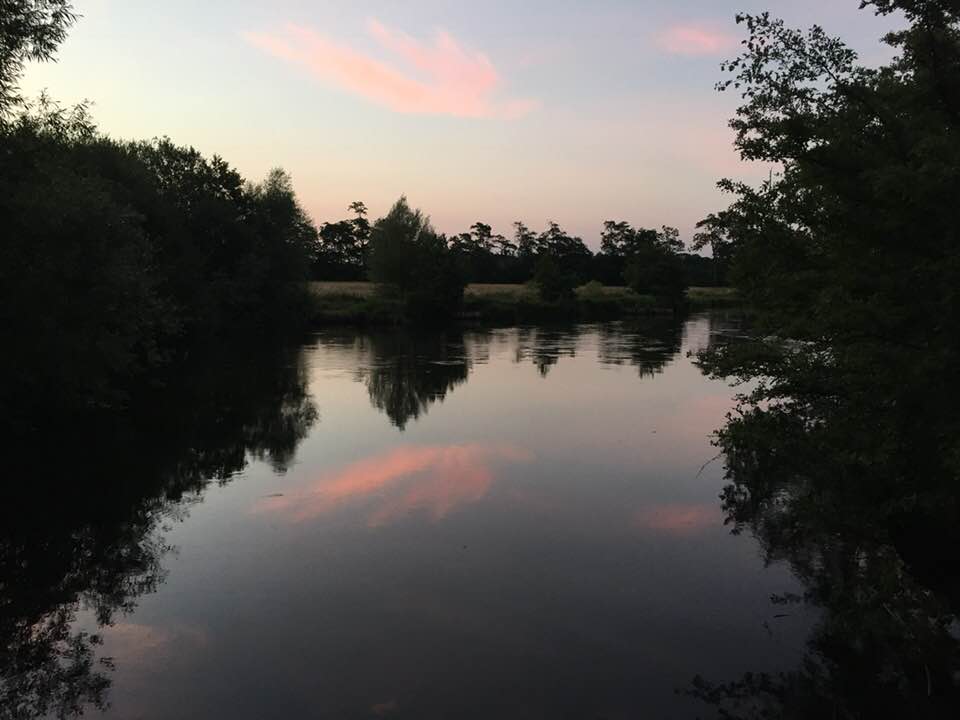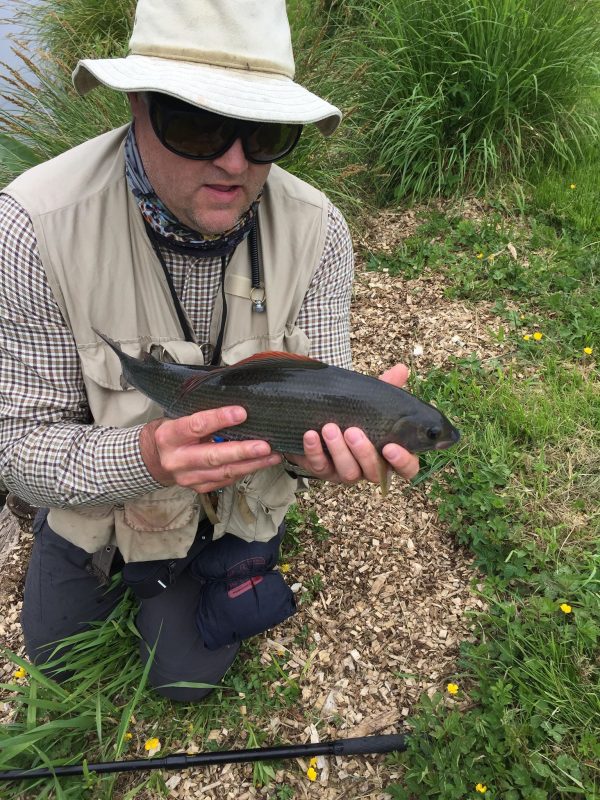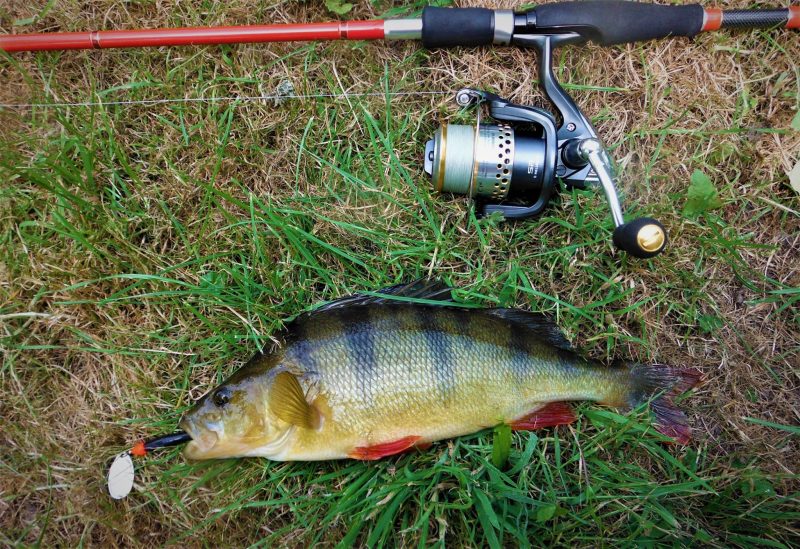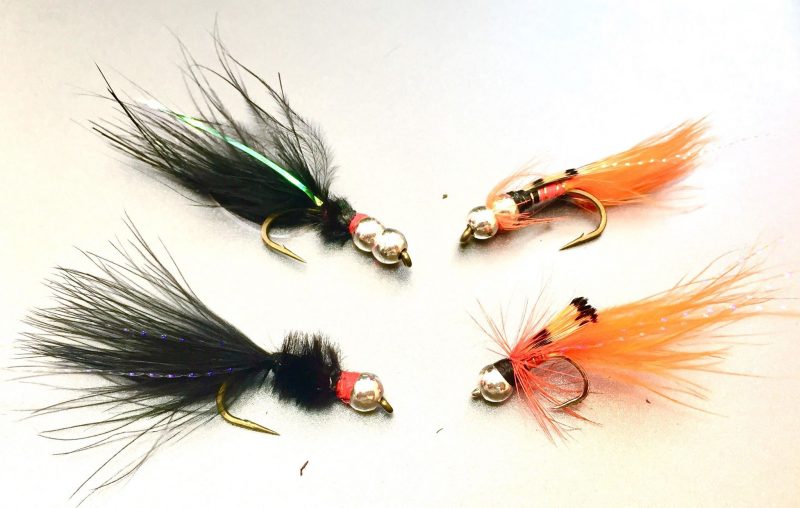https://www.silverscalesflytying.co.uk/wp-content/uploads/2018/07/Steves-jig-fly.jpg
Steve Bewes shows us how to tie his brilliant Jig fly!
Thanks Steve!
https://www.youtube.com/watch?v=xpuh_OrcUvc&feature=youtu.be
Welcome !
Pages
- Home
- Step by Steps EP Baitfish
- Step by Steps, Mylar Sandeel
- Step by step Mega Laser dub Baitfish
- Step by Step Mylar Sea Trout Candy
- Step by Steps Chris's Shrimp
- Step by Steps, Foam Grasshopper
- Step by Step Polar Flash mini Baitfish
- Step by Step Livebait Dubbing Baitfish
- Step by Step Barred Livebait Minnow
Monday, 30 July 2018
Jig fly tying video
Friday, 27 July 2018
Oh My!
https://www.silverscalesflytying.co.uk/wp-content/uploads/2018/07/37797072_2101976610122455_5502254823057129472_n.jpg
Whenever I see Pete Kennetts flies my immediate reaction is Oh My!
Pete simply ties such beautiful flies, the profiles are perfect and you can imagine the movement created by his style of tying. Pete mostly ties Jig flies but these are tied using Dumbell eyes to help keel them.
Of course Pete uses some of our materials in his creations including Big fish fibre and Preyfish fibre.
I think you'll agree they certainly have the Wow factor!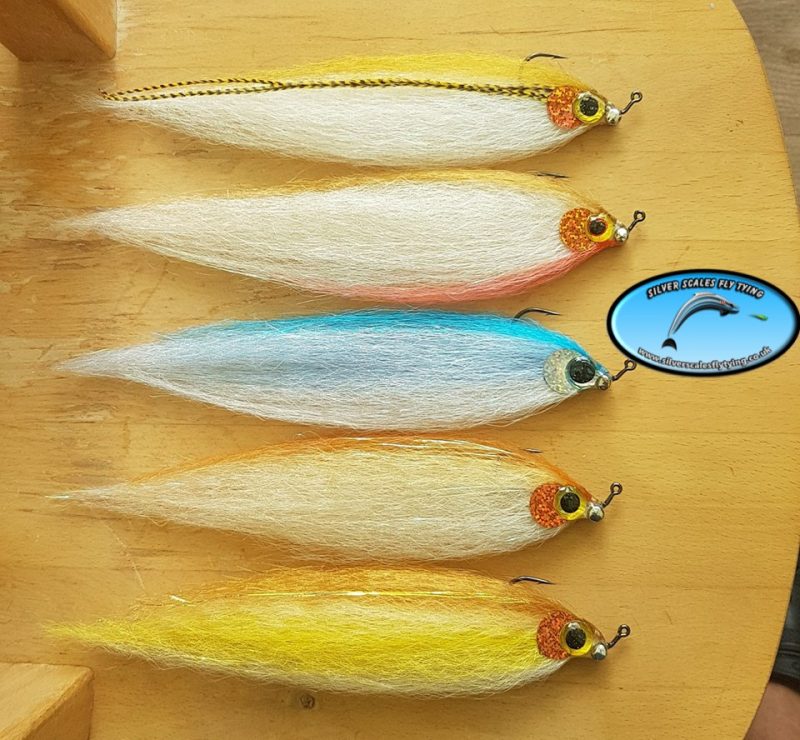
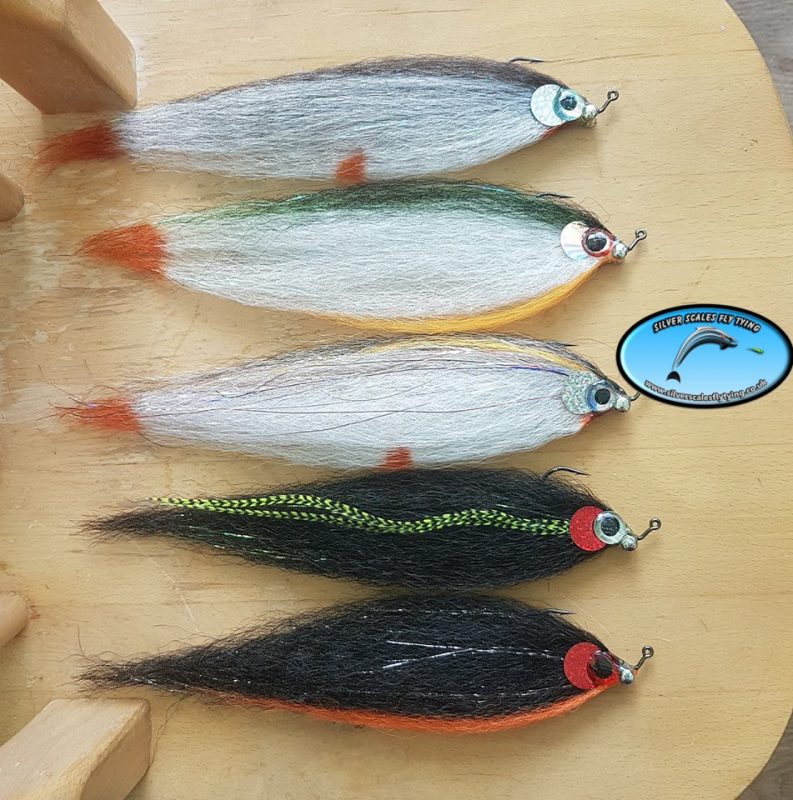
Thursday, 26 July 2018
Jig flies for Perch
https://www.silverscalesflytying.co.uk/wp-content/uploads/2018/07/37844341_2108390162755322_5451862427039694848_n.jpg
A method that is becoming more popular is the use of Jig flies. This involves tying fly materials onto a jig hook rather than a conventional un-weighted hook. The benefits are that it adds a small amount of weight to the fly which aids casting, especially in areas where your back cast may be restricted and it adds an exaggerated jigging motion to the fly which, it seems, Perch absolutely love! You can also use Jig flies on a conventional lure rod so if conditions aren't right for fly fishing or you simply have no back cast at your favourite Perch spot you can still use a fly to catch them..
Interest in this Hybridised method is growing due to the benefits mentioned above.
Silver Scales Pro Team member Steve Bewes recently helped a friend discover how deadly Jig flies can be when he tied a few for Mark Jennings who is a Bailiff on the PAC controlled section of the Lancaster Canal. Mark bagged 3 Personal best Perch over 5 trips on them with plenty of smaller specimens.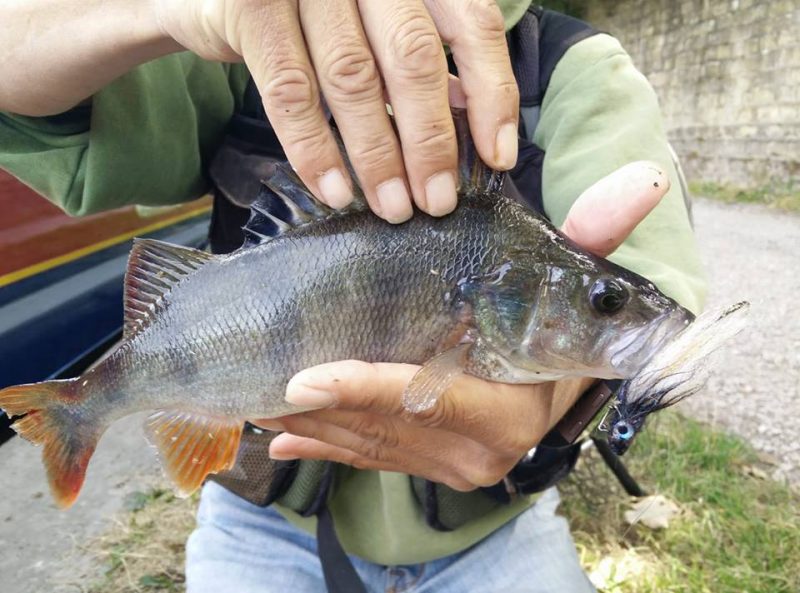
Steve ties his winning flies on Silver Scales round Jig heads in 1 and 2 grams on size 2 hooks which you can find on our sister Lure site Here, with a mixture of materials including Silver Scales Preyfish fibre and Solarez thick and thin along with Sybai Angel hair and some hackles.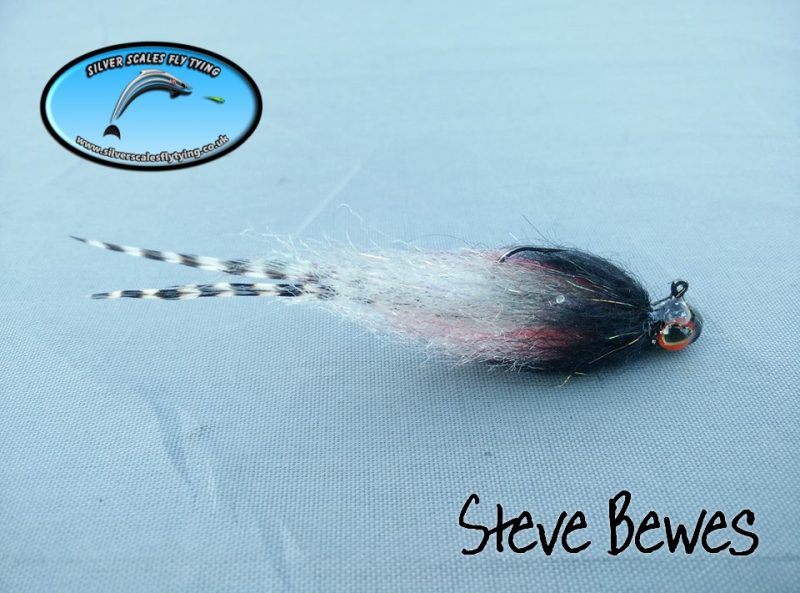
I think you'll agree it's a great looking fly and the Perch certainly seem to agree as Mark will testify!
Why not give Jig flies a go and maybe you can reap the same rewards...
Wednesday, 18 July 2018
Nice Ties
https://www.silverscalesflytying.co.uk/wp-content/uploads/2018/07/Petes-small-fies.jpg
Some nice ties by Pro Team Member Pete Kennett. Pete tied these using a variety of materials.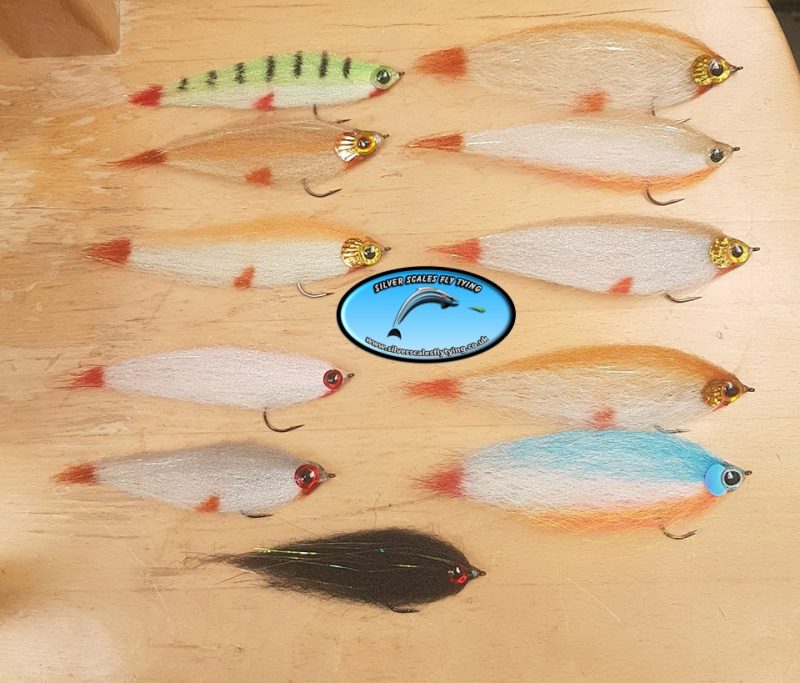
Sufix Nano Braid review and test
If like me you have a love / hate relationship with Braid then you might want to take a serious look at Sufix Nano Braid.
Over the years I have used several of the other big name brands of braid for both LRF and my normal Bass fishing with soft plastics. Some have been ok with odd niggles and some have been simply diabolical and not fit for purpose!
For a long time I switched to a Fluorocarbon mainline for the Ultra light stuff as I was so fed up with the problems I had suffered at the hands of the braid I was using, and for a time I was happy with the performance. But Fluorocarbon does has have it's limits too and being relatively heavy compared to braid I found it was costing me fish when swinging through on the tide and hampering the presentation which needed to be very precise. So I bought a well known braid to try again and yet again it gave me problems. It was incredibly weak and lacked any form of abrasion resistance so I binned it!
About this time I had taken on an account with Sufix and decided to have a look at the Nano braid with a view to making it a stock item. The first test went very well and I had a bumper session with the fish. I suffered none of the problems of old and the Braid performed exactly as it should. To say I was happy is an understatement, more time with the lure in the water instead of un picking wind knots, no dodgy weak knots at the leader and the abrasion resistance is simply outstanding, something which is high on the priority list for saltwater lrf / ultralight. Further sessions have only served to reinforce my initial findings as well as discover more benefits. The Nano Braid is incredibly smooth casting and soft, the sensitivity is exquisite and every little tap and vibration is transmitted through the Braid to the rod, I have suffered zero wind knots and the pink colour of the braid facilitates better tracking of the position of the lure even in low light and into dark..
Another benefit of the Braid is the price, it sits in the middle ground, it's not cheap nor is it expensive. I believe it represents excellent value for money given it's outstanding performance. Get spooled up with it today and I bet you won't look at any other braid again. You certainly won't be re spooling every five minutes due to wind knots or lack of abrasion resistance!
Below: The Nano Braid performed beyond expectations on initial testing and led to a bumper catch of Bass and Pollock for me.
Tuesday, 10 July 2018
Iain's unexpected red letter day
How often do you plan a Bass trip, or any species for that matter salt or fresh water, and then look out the window or study the weather forecast on the Internet and then decide against it because ' everything's wrong'?
Iain Mortimer tells us of such a day when conditions were 'not right' and yet he still found success...
Iain's story:
"I used to regularly fish bass competitions but these days it’s very rare and generally only those good natured get togethers that happen to have a prize and so can loosely be called competitions. In reality though they are just an excuse for a load of likeminded people to get together, share some laughs and hopefully catch some fish. Among those in the know such occasions are called ‘bumbles’ as it’s just a load of people bumbling about on someone else’s marks.
Such an occasion saw me setting the alarm for 0345 this Saturday so that I could collect a good buddy and head off down to the Weymouth area for a day of fun and fishing with a competitive edge. Now I have to say that with blustery north easterlies, clear bright sun and scorching temperatures over daytime tides under other circumstances we’d probably have cancelled our plans to spend time with the family. After all, why go to all the effort when it was highly likely nothing would be caught, by anyone, at all. Not in these conditions unless mackerel showed up!
Rolling up at 0630 we proceeded to check out the mark as we geared up and noted how crystal clear the water was, another bad omen in the conditions and so we cheered each up other with stories of blanks as we headed down the water. With the blustery swirly wind even my beloved fly rod stayed in the car as it would be lure fishing all the way. 7am, 8am, 9am, 10am without a twitch, swirl or any sign of anything fishy. We heard of one missed take, and one wee schoolie being caught and that was between around 10 anglers. “See told you” we said to one another, “we must be mad, how long will we give it?”. You know the kind of conversation but continue we did.

As we continued to work our way along the beach there was a nice mix of clean ground into deeper water and rocky outcrops and fingers of rock over shallower water. Great looking ground but for the conditions! However, at one point the rocky fingers ran parallel to the beach, natural dry stone walls would be a good way of describing them. I guessed that as the tide was ebbing the bass would run along the 50yard wide gullies picking off any gobies that had to cross through them to avoid being stranded as well as searching out the sandeels that surely would be present over the clean sand in the gullies. I therefore decided to put on a long, slim paddle tail and cast it as far as possible which should just about reach the furthest ‘rock wall’. A few casts later and just as the lure dropped into the gulley the rod hooped over. Success at last and although only a wee sub 40cm bass it went on the ruler for it could be a winner before being safely returned.

About 5 minutes later, exactly the same happened with an almost identical sized fish at which my fishing buddy congratulated me on my skill and prowess, at least I think that’s what he meant! Stupidly though, on the next cast I let the lure sink to far in the rapidly shallowing water and it was claimed by the rocks. Even worse, by the time I’d tied on a new leader and lure it was so shallow that I knew I’d be bumping rocks on the retrieve but with little time left and no one having a sniff of a bass on surface lures I decided to stick with it. After another 20 minutes the tide had dropped to a level that was making fishing nearly impossible and so I decided one last cast was in order. The lure negotiated the furthest rocks unscathed, came across the clean ground with no interest, reached the nearest rocks and snagged up almost instantly before line screamed out against the tight clutch. That’s no snag my mind slowly realised and my little brain quickly caught up it became apparent that this was no wee schoolie as a number of runs were made.
Eventually though the bass was beaten and having graced the beach was measured at 62cm and 5lb 6oz. That turned out to be the winning fish and I even added a 4th after lunch on a different mark in amongst kayaks, boats, snorklers and a heaving beach!



Now this isn’t really about the competition but it reminded me of a few facts. How easily we convince ourselves that the conditions are wrong, it has to be quiet, the tide needs to be at this time, there’s only one state of tide that’s worth fishing and so on. However, as this trip proved to me again, fish can be caught at any time if we simply stick with it and think about what we’re doing. Lure fishing is about so much more than just casting out and retrieving and although my buddy blanked (luck also plays a part!) we had both learned a lot and had a load of fun. I will also add that the knowledge shared by those who knew the mark also played a large part in my success and that’s bass fishing because half the battle is knowing where bass are likely to be and that part was given to me.
So next time you have the opportunity to go fishing but the conditions are rubbish, go fishing. You might just get a surprise..."
Chris:
Inspiring stuff there Iain! a great day in the end and worth the effort, and as you say it just goes to show how quickly we can talk ourselves out of going fishing simply because convention tells us it isn't right. I for one am as guilty as anyone for that.
Thanks for a smashing Article and some great pics Iain!
Friday, 6 July 2018
Maverick Mullet Bass fly Step by Step
https://www.silverscalesflytying.co.uk/wp-content/uploads/2018/07/IMG_0296-1.jpg
Here is the Step by Step for a very effective Mullet pattern fly. The way it's tied creates a very 'kicked out' hook angle which I have found promotes good hooking. The fly has a narrow head on profile which creates a darting side to side action, but has a deep side on profile to catch the Bass' attention! Overall length on a size 2 hook is 3" I have found this to be a good all round size.
Materials Needed:
Size 2 - 1/0 Sakuma 410 Stainless steel hook - your choice what size you want to tie on, I tie these on a size 2 so adjust material length according to bigger or even smaller hook.
Veevus 140 Thread in white
Silver Scales Preyfish fibre White, Baitfish Grey, Red.
Silver Scales Silver/Gold eyes 6mm - 8mm ( again depending on fly and hook size ).
Sybai Pearl Angel hair.
Solarez Thin.
Yellow Sharpie permanent marker.
Step 1.
Lay down a thread base from the eye to the barb of the hook. Tie in a thin 1cm piece of Red Silver Scales Preyfish fibre. This will be the Gill/hotspot.
Step 2.
Take a half pencil thickness of Silver Scales Preyfish fibre in White and cut a piece approx. 5cm long, tie in with a few wraps as below so that the piece facing backwards is slightly shorter than the forward piece.
Step 3.
Invert the hook and tie in a slightly shorter 4 cm piece as in previous step but this time but this time leave the forward facing piece slightly shorter than the rear facing piece.
Step 4.
Return the hook to normal position and fold back the two forward facing pieces and tie them down as in the picture below, add some glue for security.
Step 5.
Take a piece of White Preyfish fibre the same thickness but slightly longer than in step 2. It should be long enough so that the rear facing piece overlaps by a cm or so and the forward facing piece, when folded back overlaps by another cm or so. ( See step 7 ). Also add a few strands of Sybai Angel hair in the same way. Tie in as below with a few wraps.
Step 6.
Invert the hook and tie in a short 3cm piece, keep the lengths equal this time though for folding back.
Step 7.
Fold back forward facing pieces and tie down as in Picture below. Add glue for extra security.
Step 8.
Repeat steps 6 and seven, increasing the length of the fibre on top and keeping the same length underneath. Your fly should start to look something like the picture below. Don't forget to add a few strands of Sybai Angel hair as you go.
Step 9.
Take a length of Baitfish Grey Preyfish fibre and tie in on top of the hook as previous steps., BUT! this time reduce the length of the forward facing piece.. This is going to help shape our fly.
Step 10.
Invert the hook and tie in another short piece of White fibre. Return the hook to normal position and fold forward facing pieces back and tie in adding glue for security. Once done, repeat this step again reducing the length of the grey piece on top again but the same length of white underneath. As in pic below. Fold forward pieces back and tie down again.
Step 11.
Now we are going to change to a different tie. We are going to tie in short pieces of grey on top and white underneath 'x' style at 45 degrees across the shank of the hook.
Step 12.
Fold the pieces back and tie down.
Step 13.
Repeat step 12.
Step 14.
Now tie in another short piece of grey fibre on top and white underneath BUT! This time tie them in normally NOT at 45 degrees as below.
Step 15.
Fold back and make your final tie in adding glue for security. Whip finish and trim thread.

Step 16.
Remove the fly from the Vice and give it a good comb, spreading the fibres out evenly. Begin trimming carefully along the back and belly of the fly.
Step 17.
Shape the fly as you go, take your time and try to envisage the shape you want, taper the fly towards the tail as in the pic below.
Step 18.
Eventually you should end up with something close to the picture below.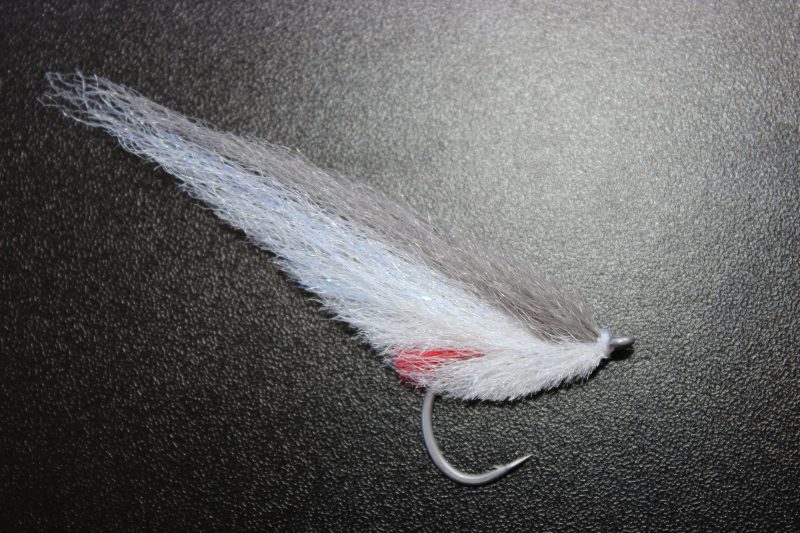
Step 19.
Return the fly to the Vice and add your eyes. Once your eyes are glued in place take some Solarez Thin and begin applying small amounts to the nose of the fly, top and bottom, let the resin run down into the fibres and around the back of the eyes. Set the resin with the torch. This will add extra security to the eyes and help give the head a more solid shape which creates the darting side to side movement that this pattern produces.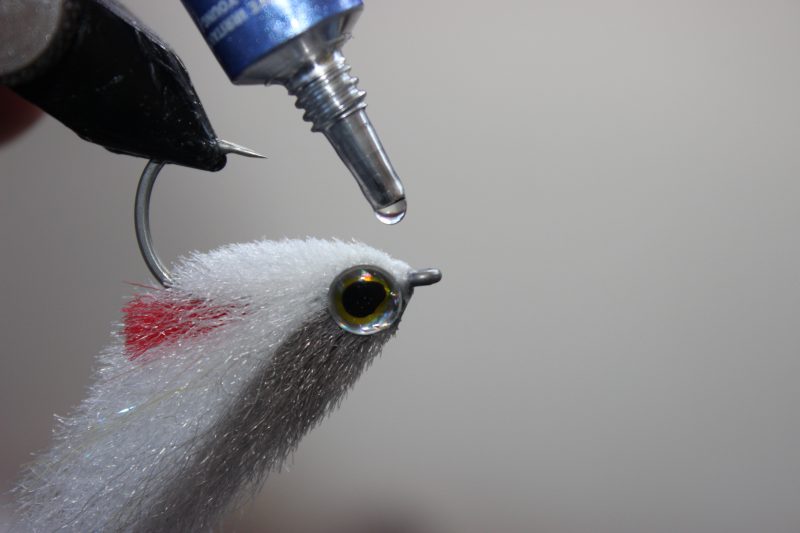
The finished fly.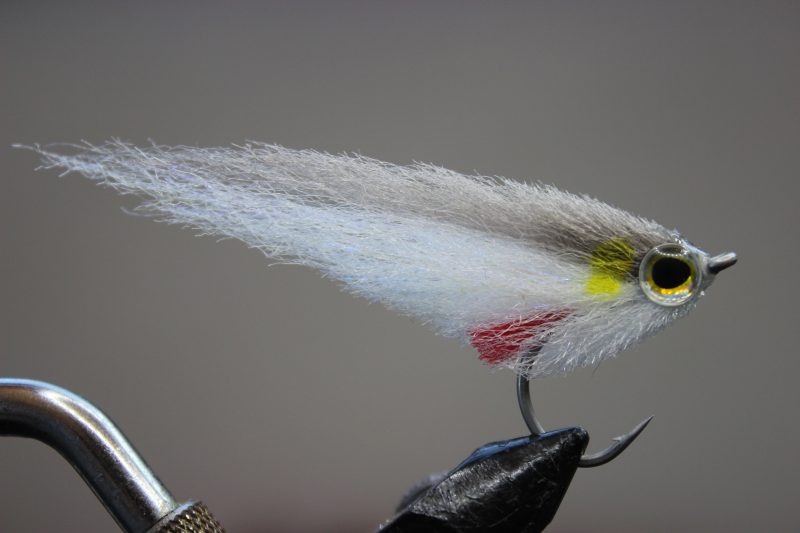
Thursday, 5 July 2018
The Maverick Mullet
https://www.silverscalesflytying.co.uk/wp-content/uploads/2018/07/IMG_0299.jpg
My most successful pattern for European Sea Bass this year. Tied from Silver Scales Preyfish fibre.
I call it 'The Maverick Mullet'.
Why 'Maverick'?
...
Well it's tied in a different way to most conventional flies of this style, leaving the tail fibres longer to add movement, the Hook is at a very aggressive kicked out angle which I've found improves the hook up ratio and the head is tall and narrow and is built up with Solarez thin, this helps to give the fly a darting side to side swimming action. Nose to tip of tail it's just three inches long, yet has a fairly deep side profile for it's size creating the impression of a worthy meal and being very easy to cast at the same time.
A Step by step will follow via the blog.

Wednesday, 4 July 2018
Toothy, stripey, greedy, lady, ‘salmon’ by Iain Mortimer
https://www.silverscalesflytying.co.uk/wp-content/uploads/2018/07/Iain-salmon-3.jpg
Iain
